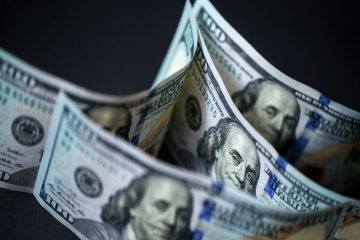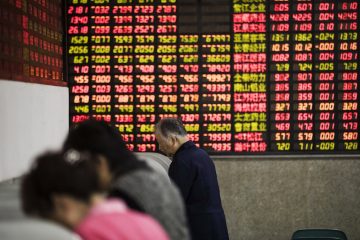| Symbol | Last | Change | % | High | Low |
|---|---|---|---|---|---|
| USD / DKK | 6.3613 | -0.0018 | -0.03% | 0.0000 | 0.0000 |
| Close | GMT Time : Sat Dec 13 2025 04:10 | ||||
USD/DKK : Intraday Live Chart
USD/DKK : Technical Signal Buy & Sell
| 5 Min Signal | 1 Hour Signal | 1 Day Signal |
|---|---|---|
| Buy | Sell | Sell |
USD/DKK : Moving Averages
| Period | MA 20 | MA 50 | MA 100 |
|---|---|---|---|
| 5 Minutes | 6.36 | 6.36 | 6.36 |
| 1 Hour | 6.36 | 6.37 | 6.39 |
| 1 Day | 6.43 | 6.44 | 6.41 |
| 1 Week | 6.40 | 6.64 | 6.76 |
USD/DKK : Technical Resistance Level
| Resistance 1 - R1 | Resistance 2 - R2 | Resistance 3 - r3 |
|---|---|---|
| 0.0000 | 0.0000 | 0.0000 |
USD/DKK : Technical Support Level
| Support 1 - S1 | Support 2 - S2 | Support 3 - S3 |
|---|---|---|
| 0.0000 | 0.0000 | 0.0000 |
USD/DKK : Periodical High, Low & Average
| Period | High Change from Last | Low Change from Last | Average Change from Last |
|---|---|---|---|
| 1 Week | 6.4241 -0.0628 | 0.0000 +6.3613 | 6.3960 -0.0347 |
| 1 Month | 6.4910 -0.1297 | 0.0000 +6.3613 | 6.4331 -0.0718 |
| 3 Month | 6.5018 -0.1405 | 0.0000 +6.3613 | 6.4151 -0.0538 |
| 6 Month | 6.5435 -0.1822 | 0.0000 +6.3613 | 6.4074 -0.0461 |
| 1 Year | 7.3310 -0.9697 | 0.0000 +6.3613 | 6.6094 -0.2481 |
USD/DKK : Historical Chart
USD to DKK Exchange Rate History: Tracking the US Dollar and Danish Krone Over Decades
The USD to DKK exchange rate—representing the US dollar to Danish krone—is a key metric reflecting economic dynamics between the United States and Denmark. Though the Danish krone is less volatile than many other currencies due to Denmark’s policy of maintaining a tight peg to the euro, the USD/DKK pair remains sensitive to changes in interest rates, global trade flows, and geopolitical uncertainty.
Understanding the long-term trends and historical context of the USD/DKK exchange rate is crucial for forex traders, financial analysts, and anyone involved in international trade or currency hedging.
1970s–1980s: The Rise of Inflation and Global Monetary Reforms
The 1970s marked the end of the Bretton Woods system and a shift to floating exchange rates globally. Denmark, which had traditionally tied the krone to major currencies, saw pressure on its monetary policy due to rising global inflation.
In the early part of the 1970s, the Danish krone was relatively stable against the U.S. dollar, trading around 5.00 DKK per USD. However, as oil shocks and inflation surged in the U.S., the dollar weakened globally, and DKK appreciated to around 4.50 by 1979.
The 1980s, however, brought renewed strength in the U.S. dollar due to aggressive rate hikes by the Federal Reserve. By 1985, USD/DKK touched 11.00, its highest level historically. Denmark responded with tighter fiscal policy, and the krone gradually stabilized as part of the European Monetary System (EMS), paving the way for closer integration with European economies.
1990s: EMS Stability and Euro Alignment
Throughout the 1990s, Denmark continued its commitment to EMS targets, effectively pegging the krone to the Deutsche Mark and later to the euro as the EMU (Economic and Monetary Union) took shape. This meant less volatility in DKK against European currencies, though fluctuations continued against the USD due to dollar strength cycles.
During the early 1990s U.S. recession, USD/DKK dropped to near 5.00. However, the U.S. recovery and rising interest rates mid-decade strengthened the dollar. By 1999, as the euro launched, USD/DKK hovered between 6.50 and 7.20.
Despite opting out of adopting the euro formally in a 2000 referendum, Denmark remained committed to its fixed exchange rate policy under ERM II, keeping DKK closely aligned with the euro.
2000s: Dollar Cycles, Global Trade Imbalances, and Danish Stability
The early 2000s saw a weakening U.S. dollar due to rising trade deficits and concerns about monetary policy. The USD/DKK dropped to 5.40 in 2004. However, following the 2008 global financial crisis, the dollar rebounded as investors sought safe-haven assets.
During this time, Denmark maintained tight control over its monetary policy to keep the krone stable within a narrow band to the euro (plus/minus 2.25%). As the U.S. enacted emergency rate cuts in 2008–2009, the USD/DKK briefly spiked above 6.00 before declining again as markets normalized.
Overall, the 2000s represented a period of moderate volatility in the pair, driven more by U.S. economic cycles than Danish fundamentals.
2010s: Euro Crisis and Fed Policy Divergence
The eurozone debt crisis of 2011–2012 created volatility in European currencies, but the DKK remained largely stable due to Denmark’s solid fiscal metrics and monetary credibility. However, during this period, the U.S. dollar strengthened significantly as the Federal Reserve exited its quantitative easing programs and began raising rates.
Between 2014 and 2016, USD/DKK rose from 5.50 to 7.00, reflecting a broader dollar rally globally. Denmark maintained negative interest rates during this period to protect the krone’s peg, further driving capital flows into the U.S. dollar.
From 2017 to 2019, USD/DKK fluctuated in a narrow band between 6.40 and 6.80, in line with expectations and market stability.
2020–2024: Pandemic Shock and Central Bank Realignment
The COVID-19 pandemic created major shocks across global financial markets. Both Denmark’s Nationalbank and the U.S. Federal Reserve enacted emergency measures in 2020. USD/DKK spiked briefly above 7.00 in March 2020, but quickly fell back below 6.50 as markets stabilized and Denmark’s safe-haven appeal grew.
As inflation surged globally in 2021–2022, the Federal Reserve began its most aggressive rate hike cycle in decades, while Denmark’s Nationalbank followed closely to maintain the euro peg. As a result, the USD/DKK again surged above 7.30 in 2022, its highest level since 2001.
By 2023–2024, as inflation cooled and interest rate expectations moderated, USD/DKK returned to the 6.80–7.10 range. As of April 2025, the pair trades at approximately 6.97, reflecting broader global uncertainty and a stable eurozone outlook.
✅ Key:
🟢 = Danish krone appreciated vs USD
❌ = Danish krone depreciated vs USD
⚠️ = Minimal change / Range-bound
📊 USD to DKK Exchange Rate by Decade
| Decade | Avg. USD/DKK Rate (Approx) | Change vs. Previous Decade | Key Events |
|---|---|---|---|
| 1970s | 5.00 → 4.50 | 🟢 +10% DKK appreciation | End of Bretton Woods, USD inflation crisis |
| 1980s | 4.50 → 8.00 | ❌ -44% DKK depreciation | U.S. rate hikes, dollar rally, EMS alignment |
| 1990s | 8.00 → 6.50 | 🟢 +19% DKK appreciation | Euro convergence, stable Danish policy, U.S. tech boom |
| 2000s | 6.50 → 5.40 | 🟢 +17% DKK appreciation | USD weakness, global imbalances, financial crisis |
| 2010s | 5.40 → 6.80 | ❌ -26% DKK depreciation | Fed rate hikes, euro crisis, Danish rate cuts |
| 2020s (till 2025) | 6.80 → 6.97 | ⚠️ Range-bound | Pandemic recovery, inflation shocks, central bank tightening |
USD/DKK - US Dollar / Danish Krone Currency Rate
Live Price of USD/DKK. USD/DKK Live Chart, Intraday & Historical Live Chart, Buy Sell Signal, USD/DKK News, USD/DKK Averages, Returns & Historical Data
» USD/DKK
» USD/DKK Real Time Quotes
» USD/DKK Live Chart
» USD/DKK Intraday Chart
» USD/DKK Historical Chart
» USD/DKK Buy Sell Signal
» USD/DKK News
» USD/DKK Videos
» USD/DKK Averages
» USD/DKK Currency Pair
» USD/DKK Historical Data








